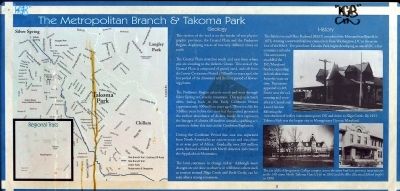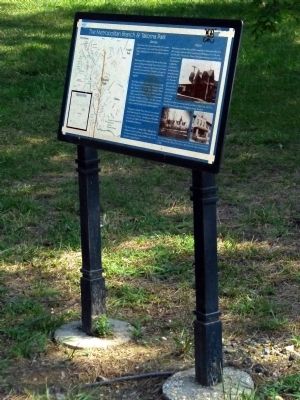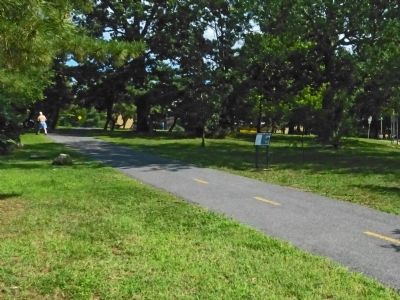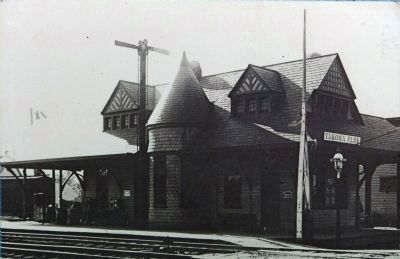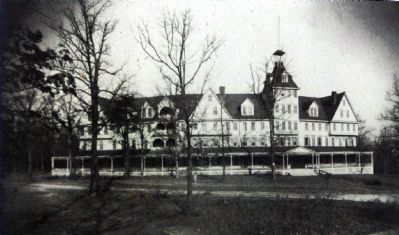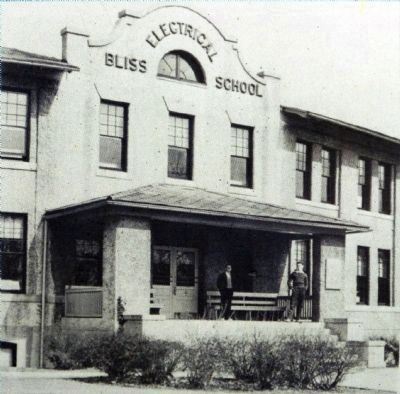The Metropolitan Branch and Takoma Park
Geology
This section of the trail is on the border of two physiographic provinces, the Coastal Plain and the Piedmont Region, display traces of two different times on Earth.
The Coastal Plain stretches south and east from where you are standing to the Atlantic Ocean. This area of the Coastal Plain is composed of gravel, sand and silt from the Lower Cretaceous Period (150 million years ago), the last period of dinosaurs and the first period of flowering plants.
The Piedmont Region extends north and west through Silver Spring to Catoctin mountain. This region is much older, dating back to the Early Cambrian Period (Approximately 500 million years ago), There was life for 3 billion years before this time but this period generated the earliest abundance of diverse fossils that represent the lineages of almost all modern animals, sparking scientists to define this time as the Cambrian Explosion.
During the Cambrian Period this area was separated from North America by an ancient ocean and was closer to or even part of Africa. Gradually, over 200 million years, the land collided with North America and created the Appalachian Mountains.
The land continues to change today. Although most changes are too slow to observe in a lifetime, others such as erosion around Sligo Creek and Rock Creek, can be seen
after a strong rainstorm.
History
The Baltimore and Ohio Railroad (B&O) completed the Metropolitan Branch in 1873, creating a westward railway connection from Washington, DC to the main line of the B&O. Ten years later Takoma Park began developing as on of DC's first commuter suburbs. The Community straddled the DC/Maryland border, expanding in both directions from the train station. Businesses appeared on 4th Street near the rail crossing and soon after at Carroll and laurel Avenue following the introduction of of trolley lines running into DC and down to Sligo Creek. By 1913, Takoma Park was the largest city in Montgomery County, Maryland.
[Caption:]
The site of the Montgomery College campus across the street had two previous incarnations as the 140-room North Takoma Hotel (left) in 1892 and the Bliss Electrical School (right) in 1908
Erected by City of Takoma Park, Maryland.
Topics and series. This historical marker is listed in these topic lists: Railroads & Streetcars • Settlements & Settlers • Waterways & Vessels. In addition, it is included in the Baltimore and Ohio Railroad (B&O) series list. A significant historical year for this entry is 1873.
Location. This marker has been replaced by another marker nearby.
Other nearby markers. At least 8 other markers are within walking distance of this location. The Metropolitan Branch & Takoma Park (here, next to this marker); Living in Takoma Park (within shouting distance of this marker); Belle Ziegler Park (within shouting distance of this marker); Walt Penney Field (about 500 feet away, measured in a direct line); Jesup Blair House (approx. ¼ mile away); Silver Spring Experienced by a Mother and Child, 1861-1865 (approx. ¼ mile away); The Blair Family and their Silver Spring Homes (approx. ¼ mile away); The Blair Family and the Civil War (approx. ¼ mile away). Touch for a list and map of all markers in Takoma Park.
Related marker. Click here for another marker that is related to this marker. This marker has been replaced with the linked marker, which has different formatting and slightly different content.
Credits. This page was last revised on May 28, 2021. It was originally submitted on August 14, 2012, by Allen C. Browne of Silver Spring, Maryland. This page has been viewed 742 times since then and 55 times this year. Photos: 1, 2, 3. submitted on August 14, 2012, by Allen C. Browne of Silver Spring, Maryland. 4, 5, 6. submitted on August 24, 2014, by Allen C. Browne of Silver Spring, Maryland. • Bill Pfingsten was the editor who published this page.
